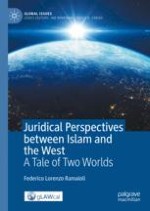
2023 | OriginalPaper | Buchkapitel
1. Introduction: The West and Islam: Juridical Categories in a Transitional Global Scenario
verfasst von : Federico Lorenzo Ramaioli
Erschienen in: Juridical Perspectives between Islam and the West
Aktivieren Sie unsere intelligente Suche, um passende Fachinhalte oder Patente zu finden.
Wählen Sie Textabschnitte aus um mit Künstlicher Intelligenz passenden Patente zu finden. powered by
Markieren Sie Textabschnitte, um KI-gestützt weitere passende Inhalte zu finden. powered by